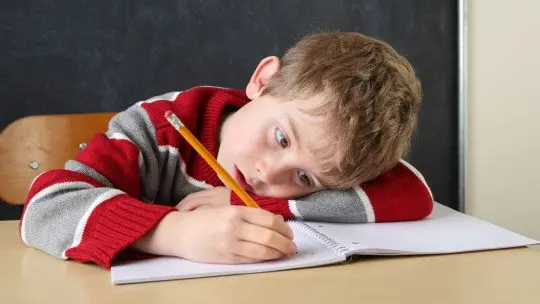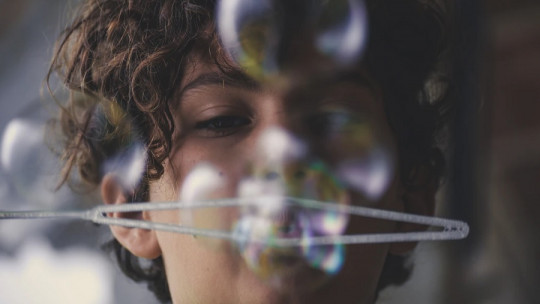In the last 20 years, the number of children diagnosed with ADHD in our country and in the countries around us has increased significantly, which has triggered alarm among both parents and teachers.
This has led to more attention to distinguish between cases of attention deficit disorder, on the one hand, and simple curiosity and tendency to want to play of boys and girls, on the other.
And detecting the presence of this alteration in time is key to offering the little ones in the house all the support they need both at school and in the family context.
How to differentiate between children with ADHD and very active children?
Attention deficit disorder (ADHD) is one of the most common neurodevelopmental disorders that can arise in childhood, and one of the most studied in the field of psychology and health.
However, sometimes the line between this disorder and a very active personality of active or curious children is blurry and difficult to draw.
In this sense, let’s see what the keys are to distinguish between one thing and the other, although you must keep in mind that the definitive diagnosis can only be made by professionals.
Characteristics of active children
Children who are active or have a lot of daily activity do not present any alterations, pathologies or disorders that require treatment nor, in general, do they need to be evaluated by a professional. This is evident when the child with active or curious behavior is able to control himself in certain situations and his nature does not interfere with his academic results.
To further clarify the personality of active children and their nature, below we present their main characteristics.
1. They are curious
The main motivation that lively, active, naughty and unruly children have is the curiosity they feel about the world around them and your need to explore it.
This causes these children to have some specific difficulties staying calm in one place, remaining silent and not moving for a certain amount of time, which is why their behavior can often be confused with ADHD. However, this It does not happen with a daily frequency.
2. They are able to pay attention
Like any normal child their age, active children They are able to easily pay full attention to any subject as long as this interests them, something that a child with ADHD generally will not be able to do.
In the same way, a normal child with a tendency to be active will be able to consciously attend to anything that interests him, concentrating and even asking questions about that same topic to learn more.
3. Normal distractions
When a topic is not of interest to them, agitated children can become distracted and focus their attention on other stimuli that are more interesting to them; However, this does not occur in the face of all the relatively complex tasks they face, and This happens especially with elements that offer quite intense stimulation (a speaker with music, an exotic bird in a cage, etc.).
4. Age-appropriate pranks
Active children tend to be naughty due to their great activity during the day, but They usually don’t get into fights something that tends to happen all too often in cases of ADHD that have not been treated.
The pranks carried out by these children are usually those of their ages and level of development and take place in a context of joy, creativity, motivation and good humor.
5. They are capable of establishing social relationships
These children do not present any difficulties in the social sphere and are capable of establishing normal social relationships both with peers of the same age and with friends from outside school or teachers.

The ability to interact socially in a sustainable and consistent manner is intact in these types of active children and they usually have friends and are even popular in their class group.
6. They almost always take into account the rules of coexistence
Finally, active children are well aware of the rules of coexistence and the limits that are established towards certain prohibited behaviors or activities, and they take them into account when deciding what to do (even if they sometimes decide to transgress them).
Characteristics of ADHD
ADHD is a completely different disorder from that of a child with a busy or excessively active personality and presents a series of characteristics and specific effects on the person who presents it.
Below we will see what the main characteristics of ADHD are in contrast to active boys and girls who do not present any disorder.
1. Constant difficulties when paying attention
Boys and girls with ADHD present serious difficulties paying attention sustainably over time as well as to listen, follow instructions or guidelines, appreciate nuances or details and also when playing or carrying out joint tasks.
Unlike busy children, who can pay attention, children with ADHD have great difficulty carrying out complex activities that involve carrying out a sequence of relatively complex actions, and in general keeping up with the academic pace of their classmates.
2. Need not to stand still
Children with ADHD They tend to get up frequently in situations where they must be sitting and vice versa entering a state of discomfort and discomfort when they should be quiet and silent.
In addition to that, other common symptoms of ADHD are hitting the table with your hands, hitting your feet; running around at times when it is not allowed; climbing or climbing on all types of surfaces and talking excessively when not touching.
3. They are also distracted by elements that are not very stimulating
They are easily distracted by even the most insignificant things anecdotal and unimportant, since each stimulus, no matter how small, can attract their attention and make them neglect their obligations.
This generates great anxiety, discomfort and frustration in children with ADHD, who try by all means to concentrate, without success, to correctly carry out any activity at school or at home.
4. Anxiety
As we have indicated, the inability to function normally like the rest of their peers usually generates anxiety and states of discomfort in children, as well as a great impact on their mental health.
Anxiety often occurs in situations that require calm and stillness, or in times when they must wait for a certain amount of time. This anxiety can lead to the appearance of other mental health disorders.
5. Greater predisposition to anger
Aggression and other inappropriate behavior with other children or with adults and their parents They are a way to channel your discomfort and frustration due to the consequences of ADHD that has not been treated in therapy.
Likewise, children with ADHD have real problems playing normally with other children, since They are often seen as too intense when carrying out any game or joint activity that requires organization and order.
6. Marked difficulties in relationships
The relationship difficulties of children with ADHD who have not attended therapy are caused by their problems in following social norms, as well as their tendency to talk a lot and engage in intrusive social behavior.
Children with ADHD have difficulty making friends, since they do not know how to behave as children their age do and their social interactions are impulsive, awkward and intrusive.









